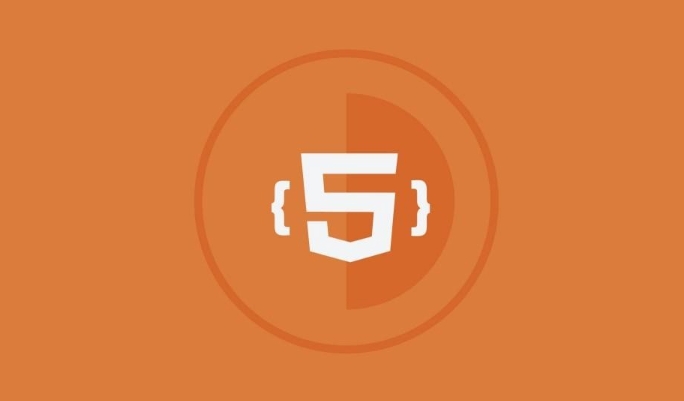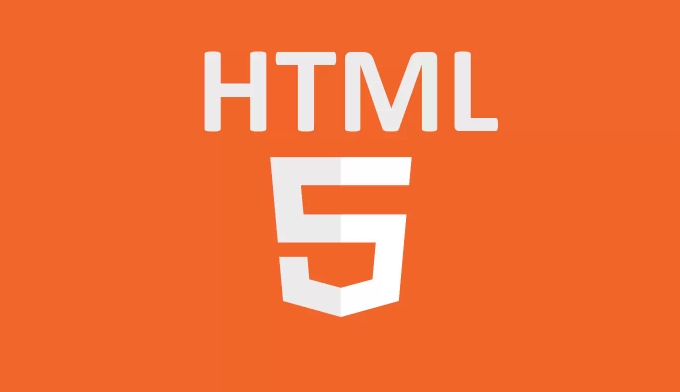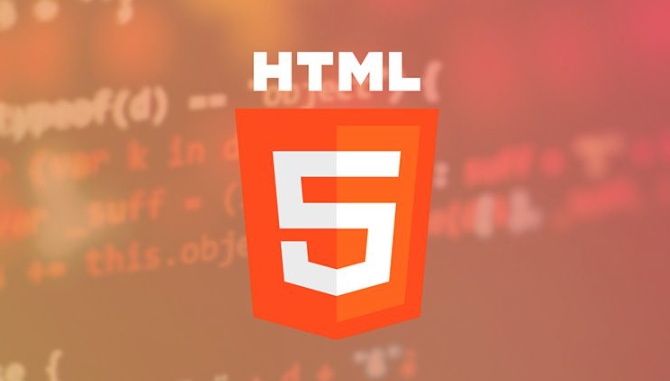Choosing the right HTML editing tool can significantly improve development efficiency. There are four mainstream tools: 1. Visual Studio Code is suitable for lightweight and fast development, open source, and has a strong plug-in ecosystem, supporting intelligent completion, real-time preview and Emmet rapid generation structure; 2. Sublime Text provides a one-stop development experience, fast response speed, simple interface, supports multi-cursor editing and rich shortcut key operations; 3. Brackets is more suitable for beginners or design-oriented users, providing real-time preview and inline editing functions, which are easy to learn and visual adjustment; 4. WebStorm is aimed at professional development, deeply integrating multiple technology stacks, with powerful error detection and repair capabilities, and supports debugging and version control. Just choose the most suitable tool according to the type of project and personal habits.

When writing HTML, choosing the right tool can really save you a lot of trouble. There are many text editors and IDEs on the market that support HTML editing, each with its own strengths, and the key depends on what your needs are.

1. Lightweight and fast: Visual Studio Code
VS Code is one of the most popular code editors at present and is also very friendly to HTML. It is open source itself, and the plug-in ecosystem is strong. You can basically start writing code directly after installation.

- Built-in IntelliSense, automatically prompts closure, attributes, etc. when writing tags.
- Supports real-time preview plug-ins (such as "Live Server"), and you can see page changes by saving the file.
- You can quickly generate structures with Emmet, such as inputting
div.container>ul>li*3and then pressing Tab to generate a list with one click.
If you just want to write a page prototype quickly or do some small projects, VS Code is a very stable choice.
2. One-stop development experience: Sublime Text
Although Sublime Text is a paid software, it has fast response speed and simple interface, making it suitable for those who like lightweight and efficient.

- Supports multi-cursor editing, which is particularly useful for HTML tag languages, such as modifying multiple tag names at the same time.
- Package Control allows you to easily expand features, such as adding syntax checking and formatting tools.
- The default shortcut key settings are very easy, such as Ctrl / can quickly comment the current line.
Although it does not have many built-in functions like VS Code, it has the advantage of fast startup and low resource usage, which is suitable for old computers or scenarios where you just want to focus on writing code.
3. More suitable for beginners or design oriented: Brackets
Brackets is an open source editor launched by Adobe, focusing on front-end development, especially suitable for those who are new to HTML and CSS.
- The real-time preview function can directly connect to the browser, and you can see the effect while modifying the code.
- Supports inline editing (Inline Editors), for example, clicking on the color value can directly pop up the color board to select colors.
- The plug-in system is also quite rich, and additional features can be added as needed.
If you are still in the learning stage, or focus more on visual presentation than complex development processes, Brackets is a good choice.
4. Professional level development: WebStorm
WebStorm is a professional IDE produced by JetBrains, suitable for large-scale projects or front-end development scenarios.
- Deeply integrate HTML, CSS, JavaScript, and even supports frameworks such as Vue and React.
- Powerful error detection and automatic repair capabilities, and the wrong tag or attribute will be prompted immediately.
- Supports a complete set of development tools such as debugging, version control, and database connection.
However, it is not free, and the configuration is relatively complex, suitable for developers who already have a certain foundation and need a stable development environment.
Basically these mainstream options. If you just write some static pages, VS Code or Brackets is enough; if you pursue efficiency and customization, Sublime Text is suitable; while WebStorm is more suitable for professional development. Choose according to your usage habits and project type. Don’t be too confused. It’s the most important thing to use it easily.
The above is the detailed content of What are the best text editors or IDEs for writing HTML?. For more information, please follow other related articles on the PHP Chinese website!

Hot AI Tools

Undress AI Tool
Undress images for free

Undresser.AI Undress
AI-powered app for creating realistic nude photos

AI Clothes Remover
Online AI tool for removing clothes from photos.

Clothoff.io
AI clothes remover

Video Face Swap
Swap faces in any video effortlessly with our completely free AI face swap tool!

Hot Article

Hot Tools

Notepad++7.3.1
Easy-to-use and free code editor

SublimeText3 Chinese version
Chinese version, very easy to use

Zend Studio 13.0.1
Powerful PHP integrated development environment

Dreamweaver CS6
Visual web development tools

SublimeText3 Mac version
God-level code editing software (SublimeText3)

Hot Topics
 How do I stay up-to-date with the latest HTML standards and best practices?
Jun 20, 2025 am 08:33 AM
How do I stay up-to-date with the latest HTML standards and best practices?
Jun 20, 2025 am 08:33 AM
The key to keep up with HTML standards and best practices is to do it intentionally rather than follow it blindly. First, follow the summary or update logs of official sources such as WHATWG and W3C, understand new tags (such as) and attributes, and use them as references to solve difficult problems; second, subscribe to trusted web development newsletters and blogs, spend 10-15 minutes a week to browse updates, focus on actual use cases rather than just collecting articles; second, use developer tools and linters such as HTMLHint to optimize the code structure through instant feedback; finally, interact with the developer community, share experiences and learn other people's practical skills, so as to continuously improve HTML skills.
 How do I use the element to represent the main content of a document?
Jun 19, 2025 pm 11:09 PM
How do I use the element to represent the main content of a document?
Jun 19, 2025 pm 11:09 PM
The reason for using tags is to improve the semantic structure and accessibility of web pages, make it easier for screen readers and search engines to understand page content, and allow users to quickly jump to core content. Here are the key points: 1. Each page should contain only one element; 2. It should not include content that is repeated across pages (such as sidebars or footers); 3. It can be used in conjunction with ARIA properties to enhance accessibility. Usually located after and before, it is used to wrap unique page content, such as articles, forms or product details, and should be avoided in, or in; to improve accessibility, aria-labeledby or aria-label can be used to clearly identify parts.
 How do I create a basic HTML document?
Jun 19, 2025 pm 11:01 PM
How do I create a basic HTML document?
Jun 19, 2025 pm 11:01 PM
To create a basic HTML document, you first need to understand its basic structure and write code in a standard format. 1. Use the declaration document type at the beginning; 2. Use the tag to wrap the entire content; 3. Include and two main parts in it, which are used to store metadata such as titles, style sheet links, etc., and include user-visible content such as titles, paragraphs, pictures and links; 4. Save the file in .html format and open the viewing effect in the browser; 5. Then you can gradually add more elements to enrich the page content. Follow these steps to quickly build a basic web page.
 How do I create checkboxes in HTML using the element?
Jun 19, 2025 pm 11:41 PM
How do I create checkboxes in HTML using the element?
Jun 19, 2025 pm 11:41 PM
To create an HTML checkbox, use the type attribute to set the element of the checkbox. 1. The basic structure includes id, name and label tags to ensure that clicking text can switch options; 2. Multiple related check boxes should use the same name but different values, and wrap them with fieldset to improve accessibility; 3. Hide native controls when customizing styles and use CSS to design alternative elements while maintaining the complete functions; 4. Ensure availability, pair labels, support keyboard navigation, and avoid relying on only visual prompts. The above steps can help developers correctly implement checkbox components that have both functional and aesthetics.
 How do I minimize the size of HTML files?
Jun 24, 2025 am 12:53 AM
How do I minimize the size of HTML files?
Jun 24, 2025 am 12:53 AM
To reduce the size of HTML files, you need to clean up redundant code, compress content, and optimize structure. 1. Delete unused tags, comments and extra blanks to reduce volume; 2. Move inline CSS and JavaScript to external files and merge multiple scripts or style blocks; 3. Simplify label syntax without affecting parsing, such as omitting optional closed tags or using short attributes; 4. After cleaning, enable server-side compression technologies such as Gzip or Brotli to further reduce the transmission volume. These steps can significantly improve page loading performance without sacrificing functionality.
 How has HTML evolved over time, and what are the key milestones in its history?
Jun 24, 2025 am 12:54 AM
How has HTML evolved over time, and what are the key milestones in its history?
Jun 24, 2025 am 12:54 AM
HTMLhasevolvedsignificantlysinceitscreationtomeetthegrowingdemandsofwebdevelopersandusers.Initiallyasimplemarkuplanguageforsharingdocuments,ithasundergonemajorupdates,includingHTML2.0,whichintroducedforms;HTML3.x,whichaddedvisualenhancementsandlayout
 How do I use the element to represent the footer of a document or section?
Jun 25, 2025 am 12:57 AM
How do I use the element to represent the footer of a document or section?
Jun 25, 2025 am 12:57 AM
It is a semantic tag used in HTML5 to define the bottom of the page or content block, usually including copyright information, contact information or navigation links; it can be placed at the bottom of the page or nested in, etc. tags as the end of the block; when using it, you should pay attention to avoid repeated abuse and irrelevant content.
 How do I embed video in HTML using the element?
Jun 20, 2025 am 10:09 AM
How do I embed video in HTML using the element?
Jun 20, 2025 am 10:09 AM
To embed videos in HTML, use tags and specify the video source and attributes. 1. Use src attributes or elements to define the video path and format; 2. Add basic attributes such as controls, width, height; 3. To be compatible with different browsers, you can list MP4, WebM, Ogg and other formats; 4. Use controls, autoplay, muted, loop, preload and other attributes to control the playback behavior; 5. Use CSS to realize responsive layout to ensure that it is adapted to different screens. Correct combination of structure and attributes can ensure good display and functional support of the video.






